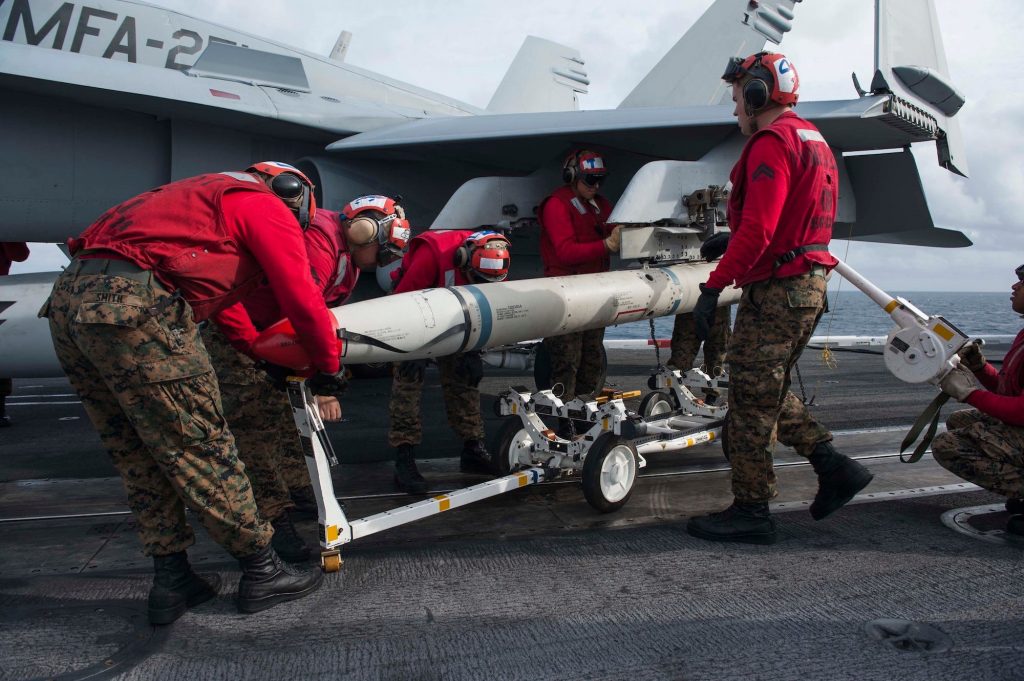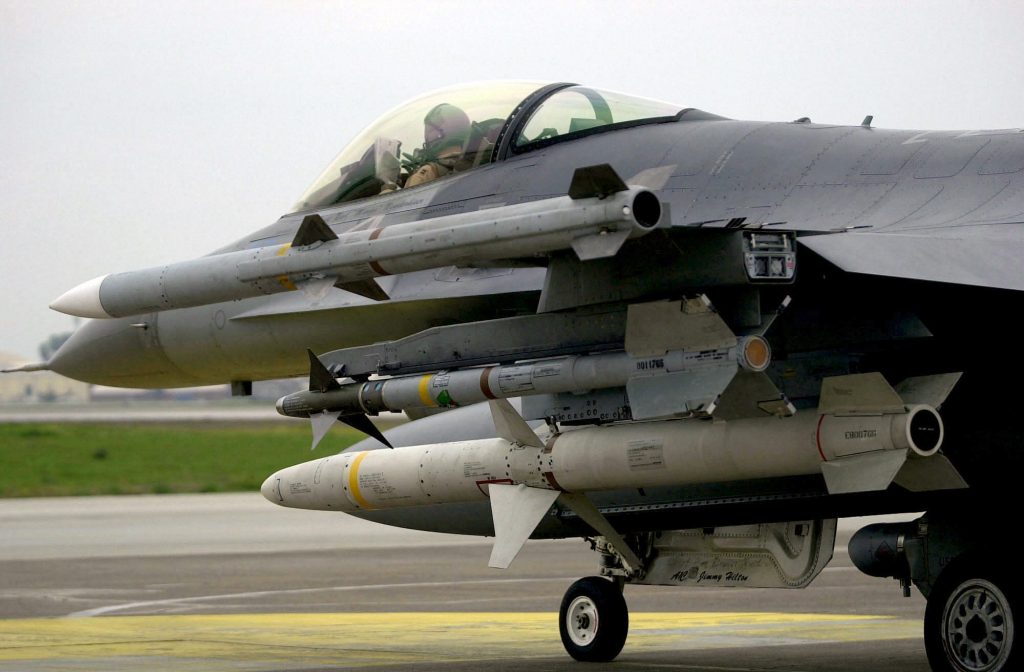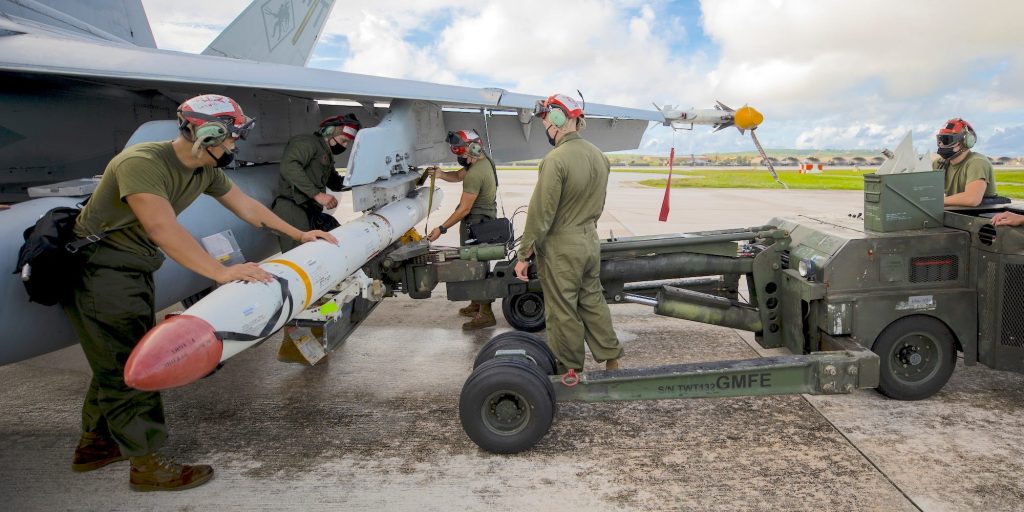- A top defense official said this month that the US has been sending Ukraine anti-radiation missiles.
- The official didn't say which missile, but there are reports of AGM-88 missiles in use in Ukraine.
- The AGM-88 may have a limited overall impact, but it gives Russian troops another reason to worry.
It's open season on Russian radar stations as Ukraine deploys US-made anti-radiation missiles designed to home in on radar beams.
Ukraine's advantage is likely to be temporary as the Russian military adapts, but for now, the presence of AGM-88 HARM, or High-speed Anti-Radiation Missiles, will make Russian troops think twice before powering up their radars.
The presence of AGM-88s spells trouble for the Russian air-defense radars needed to defend against Ukrainian helicopters and jets and for the counter-battery radars used to locate Ukrainian artillery — including US-made multiple rocket launchers.
Reports of radar-busting missiles in Ukraine surfaced in early August, after Russian bloggers reported discovering fragments of a HARM that purportedly hit a Russian anti-aircraft missile site in Ukraine. The Pentagon soon confirmed that HARMs had been supplied to Ukraine.
"We've included a number of anti-radiation missiles that can be fired off of Ukrainian aircraft that can have effects on Russia radars," Colin Kahl, the undersecretary of defense for policy, told reporters on August 8, though he didn't identify the missiles or provide other details.
A radar hunter

HARM is a powerful weapon, but not a new one. It was first deployed in 1983, and the 14-foot, 800-pound missile has a range of 30 miles and a top speed of Mach 2.
US aircraft conducting suppression of enemy air-defense missions have used the AGM-88 in several operations, including in Libya, Iraq, and Yugoslavia. The missile is now used by 15 countries in total.
The AGM-88 is a descendant of the AGM-45 Shrike, which was used in the Vietnam War with mixed success.
The Shrike — based on the troubled AIM-7 Sparrow air-to-air missile — had a short range and could only home in on a limited number of radar frequencies. North Vietnamese radar operators learned to confuse the missile's radar seeker by switching their transmitters on and off.

The HARM fixed these shortcomings. Its radar seeker covers a wide range of frequencies and retains the radar transmitter's location even if the radar is shut down. Its 30-mile range means it can be launched beyond the range of many anti-aircraft weapons.
The US Navy will deploy the AGM-88G Advanced Anti-Radiation Guided Missile Extended Range (AARGM-ER) in 2023, and the Stand-in Attack Weapon (SiAW), which is designed to attack a broader set of targets within an enemy air-defense system, is being developed for the F-35.
For its part, Russia has the Kh-31P anti-radiation missile — based on the supersonic Kh-31 anti-ship missile — which has been sold to China as the YJ-91.
The limits of airpower

Anti-radiation missiles are not wonder weapons, but they can be highly useful. When launched prior to an airstrike, they can suppress air defenses and clear a safe path for friendly aircraft.
They can also be fooled by tricks such as decoy radar transmitters. For example, the US TLQ-32 decoy system places fake transmitters at a distance from the real radar. (The decoy impact point is called the "ARM pit.")
Rather, anti-radar missiles are just one of many tools — such as jamming and decoys — in the constantly evolving, cat-and-mouse game of electronic warfare.
In many ways, anti-radiation missiles are a psychological weapon. HARM won't completely shut down Russian radars, but it will make their operators more cautious and selective about transmitting.

In Ukraine, anti-radiation missiles will likely have a limited impact.
Airpower has so far not been a decisive factor in the conflict: Ukraine doesn't have enough modern planes, and Russian pilots have been surprisingly cautious and ineffective. Shutting down Russian air-defense radars won't necessarily translate into more success for Ukrainian aircraft.
For now, the deadliest weapon in the Ukraine war is artillery, and HARMs will help Ukrainian forces hit the Russian counter-battery radars that track shells and rockets in flight, calculate their trajectories, and pinpoint the howitzers and rocket launchers that fired them.
Suppressing Russian counter-battery systems will help protect Ukraine's badly outnumbered artillery — particularly the US-supplied HIMARS multiple rocket launchers that have conducted devastating strikes against Russian ammunition dumps and command posts.
Michael Peck is a defense writer whose work has appeared in Forbes, Defense News, Foreign Policy Magazine and other publications. He holds a master's in political science. Follow him on Twitter and LinkedIn.
